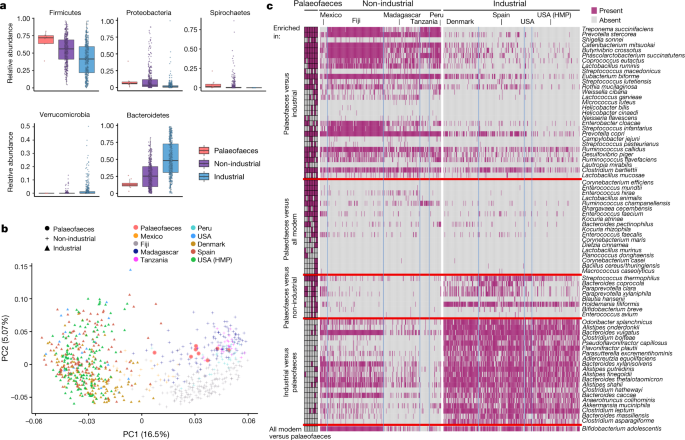An article published in Nature (Wibowo, M.C., Yang, Z., Borry, M. et al. Reconstruction of ancient microbial genomes from the human gut. Nature (2021) scientists working with ancient feces describe previously unknown bacteria that might help fight against chronic diseases. The scientists studied microbial genomes from ancient human feces (palaeofaeces) to determine microbiome composition. The feces were very well preserved thanks to the extreme aridity of the desert areas where they were found. Researchers reconstructed a total of 498 microbial genomes and concluded that 181 were from ancient humans. Of those, 61 had not previously been found in other samples. Functional profiling of the palaeofaeces samples reveals a strikingly lower abundance of antibiotic resistance. The study discovered and characterization of previously undescribed gut microorganisms from ancient microbiomes. @ https://www.nature.com/articles/s41586-021-03532-0
Reconstruction of ancient microbial genomes from the human gut
Reconstruction of ancient microbial genomes from the human gut
Ancient microbiomes from palaeofaeces are more similar to non-industrialized than industrialized human gut microbiomes regardless of geography, but 39% of their de novo reconstructed genomes represent previously undescribed microbial species.
No comments

